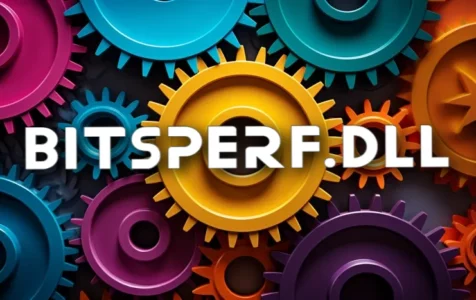Let’s embark on a journey to understand the nature and purpose of a particular file that might have popped up on your computer screen: bitsperf.dll. This mysterious file, tucked away in the vast landscape of your operating system, plays a role more crucial than one might imagine.
Bitsperf.dll is a Dynamic Link Library (DLL) file, associated with the Microsoft Windows Operating System. It is specifically crafted by Microsoft for the perfect execution of the Background Intelligent Transfer Service (BITS). The BITS is responsible for facilitating asynchronous, prioritized, and throttled transfer of files between machines using idle network bandwidth. This is particularly used in scenarios for downloading or sending files in the background.
This DLL, housed in the system folder, usually doesn’t catch your attention until an issue arises. When everything is in order, it silently performs its duties, dealing with performance counters related to BITS.
Is Bitsperf.dll Safe?
Yes, as a genuine component of the Windows operating system, bitsperf.dll is generally safe to run. It does not inherently pose any threat to your system. However, and there’s always a ‘however’ in the world of computing, any file, even a legitimate one like bitsperf.dll, could potentially become corrupted or replaced by a malicious version. Therefore, you should be just as vigilant with it as with any other file on your PC.
Expert Tip: For smoother PC performance, consider using a PC optimization tool. It handles junk files, incorrect settings, and harmful apps. Make sure it's right for your system, and always check the EULA and Privacy Policy.
Special offer. About Outbyte, uninstall instructions, EULA, Privacy Policy.
Could Bitsperf.dll Be a Virus or Malware?
As noted, the original bitsperf.dll file that comes from Microsoft is not a virus or malware. It’s a legitimate file critical for certain Windows functionalities. Nevertheless, bad actors sometimes disguise harmful software as legitimate DLLs. If you find this DLL in a location other than C:\Windows\System32\ or if it exhibits unusual behavior, this could be a sign you’ve stumbled upon a malware imposter. Always ensure that your antivirus software is up to date and that you perform regular system scans.
Common Issues with Bitsperf.dll
One particular issue you might encounter is an error message alerting you that the bitsperf.dll file has “failed” or is “missing.” These errors often sprout up at system boot or when trying to run specific applications. The usual suspects include:
– Corrupt or accidentally deleted bitsperf.dll files
– Registry issues
– Malicious software that has corrupted the bitsperf.dll file
– Conflicts with other software
Users have reported seeing Event ID 1008, signifying that the open procedure for service “BITS” in DLL “C:\Windows\System32\bitsperf.dll” failed.
How to Fix Issues with Bitsperf.dll
Before you try any remedies, it’s wise to back up your current system state. Then, depending on the nature of the problem, here are a few strategies you could employ:
– Use Windows System File Checker (SFC) to repair corrupted system files. Launch an elevated command prompt and enter `sfc /scannow` to run the tool.
– Perform a malware scan. It’s always good to rule out the presence of malware using your preferred security tool.
– Re-register the bitsperf.dll file. By running `regsvr32 bitsperf.dll` in an elevated command prompt, you can often resolve unexplained issues with the DLL.
– Check for updates to your system drivers, since out-of-date drivers can sometimes cause DLL errors.
– Utilize Windows System Restore to roll back your system to a previous state, potentially undoing any recent system changes that caused the DLL error.
– If you’re confident in your technical abilities, you might consider manual registry editing using values like “First Counter” and “Last Counter,” which proved helpful for some users in solving Event ID 1008 issues.
If you prefer a more hand-holding approach, Outbyte, an easy-to-use utility, can automate much of the repair process.
For more detailed guidance on these methods, users have shared their experiences and solutions in various community discussions:
- Admin-enclave.com provides a helpful article on resolving the “The open procedure for service BITS in DLL” error.
- The Microsoft Answers community is another place where users have gathered to discuss Event ID 1008 errors and their resolution.
- Spiceworks community forum is where IT professionals often share insights into tackling such issues.
Remember, manual tampering with system files and registry values can be risky and isn’t advised unless you are an experienced user or IT professional. Always make sure to follow safe practices and back up your system before making any changes.
In summary, while bitsperf.dll is an essential file for the Windows operating system, encountering issues related to it can range from a simple fix to a more complex issue involving malware or system corruption. Fortunately, a variety of tools and community wisdom are available to get you back on track.
